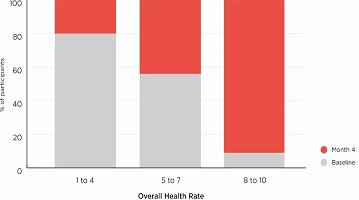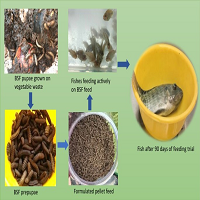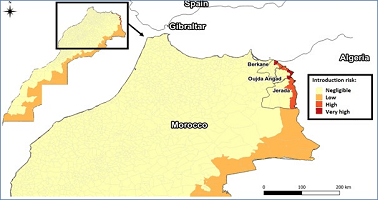1. Stojanovic V, Ihle S. Role of beta-hydroxybutyric acid in diabetic ketoacidosis: A review. Can Vet J. 2011; 52(4): 426-430. Web site. http://www.ncbi.nlm.nih.gov/pmc/articles/PMC3058661/. Accessed September 24, 2016.
2. Laffel L. Ketone bodies: A review of physiology, pathophysiology and application of monitoring to diabetes. Diabetes Metab Res Rev. 1999; 15(6): 412-426. doi: 10.1002/(SICI)1520-7560(199911/12)15:63.0.CO;2-8
3. Wilder RM, Winter MD. The threshold of ketogenesis. J Biol Chem. 1922; 52: 393-401. Web site. http://www.jbc.org/content/52/2/393.short. Accessed September 24, 2016.
4. Kang HC, Chung DE, Kim DW, Kim HD. Early- and late- onset complications of the ketogenic diet for intractable epilepsy. Epilepsia. 2004; 45(9): 1116-1123. doi: 10.1111/j.0013-9580.2004.10004.x
5. Chu DM, Antony KM, Ma J, et al. The early infant gut microbiome varies in association with a maternal high-fat diet. Genome Med. 2016; 8(1): 77. doi: 10.1186/s13073-016-0330-z
6. Watanabe S, Hirakawa A, Aoe S, Fukuda K, Muneta T. Basic ketone engine and booster glucose engine for energy production. Diabetes Res Open J. 2016; 2(1): 14-23. doi: 10.17140/DROJ-2-125
7. Cahill GF Jr. Fuel metabolism in starvation. Ann Rev Nutr. 2006; 26: 1-22. doi: 10.1146/annurev.nutr.26.061505.111258
8. Goldblatt MW. Observation on the effect of various carbohydrates on the ketosis of starvation in human subjects. Biochem J. 1925; 19: 948-958. Web site. https://www.ncbi.nlm.nih.gov/pmc/articles/PMC1259284/. Accessed September 24, 2016.
9. Hirakawa A, Watanabe S, Tanaka K. Koda’s fasting therapy: Energy balance and intestinal bacterial flora. Adv Food Technol Nutr Sci Open J. 2015: 1(5): 112-123. doi: 10.17140/AFTNSOJ-1-120
10. Aagaard K, Petrosino J, Keitel W, et al. The human microbiome project strategy for comprehensive sampling of the human microbiome and why it matters. FASEB J Off Publ Fed Am Soc Exp Biol. 2013; 27: 1012-1022. doi: 10.1096/fj.12-220806
11. Vael C, Verhulst SL, Nelen V, Goossens H, Desager KN. Intestinal microflora and body mass index during the first three years of life: An observational study. Gut Pathog. 2011; 3(1): 8. doi: 10.1186/1757-4749-3-8
12. Tuohy K, Rio DD. Diet-Microbe Interactions in the Gut: Effects on Human Health and Disease. 1st ed. CA, USA: Elsevier; 2014. https://www.sciencedirect.com/book/9780124078253/diet-microbe-interactions-in-the-gut
13. Gorvitovskaia A, Holmes SP, Huse SM. Interpreting prevotella and bacteroides as biomarkers of diet and lifestyle. Microbiome. 2016; 4: 15. doi: 10.1186/s40168-016-0160-7
14. Hayashi H, Sakamoto M, Benno Y. Fecal microbial diversity in a strict vegetarian as detemined by molecular analysis and cultivation. Microbiol Immunol. 2002; 46: 819-831. doi: 10.1111/j.1348-0421.2002.tb02769.x
15. Kurakawa T, Ogata K, Matsuda K, et al. Diversity of intestinal clostridium coccoides group in the Japanese population, as demonstragted by reverse transription-quantitative PCR. PLOS One. 2015. doi: 10.1371/journal.pone.0126226
16. Moorkoth D, Nampoothiri KM. Production and characterization of poly(3-hydroxy butyrate-co-3 hydroxyvalerate)(PHBV) by a novel holotolerant mangrove isolate. Bioresour Technol.2016; 201: 253-260. doi: 10.1016/j.biortech.2015.11.046
17. Robinson AM, Williamson DH. Physiological roles of ketone bodies as substrates and signals in mammalian tissues. Physiol Review. 1980; 60: 143-187. Web site. http://physrev.physiology.org/content/60/1/143. Accessed September 24, 2016.
18. Newman JC, Verdin E. β-hydroxybutyrate: Much more than a metabolite. Diabetes Res Clin Pract. 2014; 106(2): 173-181. doi: 10.1016/j.diabres.2014.08.009
19. Delcuve GP, Khan DH, Davie JR. Roles of histone deacetylases in epigenetic regulation: Emerging paradigms from studies with inhibitors. Clin Epigenetics. 2012; 4(1): 5. doi: 10.1186/1868-7083-4-5
20. Shimazu T, Hirschey MD, Newman J, et al. Suppression of oxidative stress by β-hydroxybutyrate, an endogenous histone deacetylase inhibitor. Science. 2013; 339(6116): 211-214. doi: 10.1126/science.1227166
21. Youm YH, Nguyen KY, Grant RW, et al. The ketone metabolite beta-hydroxybutyrate blocks NLRP3 inflammasome-mediated inflammatory disease. Nat Med. 2015; 21(3): 263-269. doi: 10.1038/nm.3804
22. Kesl SL, Poff AM, Ward NP, et al. Effects of exogenous ketone supplementation on blood ketone, glucose, triglyceride, and lipoprotein levels in Sprague-Dawley rats. Nutr Metab (Lond). 2016; 13(1): 9. doi: 10.1186/s12986-016-0069-y
23. Zhang J, Cao Q, Li S, et al. 3-Hydroxybutyrate methyl ester as a potential drug against Alzheimer’s disease via mitochondria protenction mechanism. Biomaterials. 2013; 34(30): 7552-7562. doi: 10.1016/j.biomaterials.2013.06.043
24. Cox PJ, Kirk T, Ashmore T, et al. Nutritional ketosis alters fuel preference and thereby endurance performance in athletes. Cell Metabolism. 2016; 24: 256-268. doi: 10.1016/j.cmet.2016.07.010
25. Floegel A. Low carbohydrate-high protein diets. BMJ. 2012; 344: e3801. doi: 10.1136/bmj.e3801
26. Fung TT, van Dam RM, Hankinson SE, et al. Low-carbohydrate diets and all-cause and cause-specific mortality: Two cohort studies. Ann Intern Med. 2010; 153(5): 289-298. doi: 10.1059/0003-4819-153-5-201009070-00003
27. Lagiou P, Sandin S, Weiderpass E. Low carbohydrate-high protein diet and mortality in a cohort of Swedish women. J Intern Med. 2007; e261: 366-374. doi: 10.1111/j.1365-2796.2007.01774.x
28. Ebe K. Diabetic diet and carobohydrate restricted diet: Safety and risk. Clin Funct Nutriol. 2016; 8(5): 243-246.
29. Veech RL. The therapeutic implications of ketone bodies: The effects of ketone bodies in pathological conditions: Ketosis, ketogenic diet, redox states, insulin resistance, and mitochondrial metabolism. Prostaglandins Leukot Essent Fatty Acids. 2014; 70(3): 309-319. doi: 10.1016/j.plefa.2003.09.007
30. Bonuccelli G, Tsirigos A, Whitaker-Menezes D, et al. Ketones and lactate “fuel” tumor growth and metastasis: Evidence that cancer cells use oxidative mitochondrial metabolism. Cell Cycle. 2010; 9(17): 3506-3514. doi: 10.4161/cc.9.17.12731
31. Oleksyszyn J. The complete control of glucose level utilizing the composition of ketogenic diet with the gluconeogenesis inhibitor, the anti-diabetic drug methormin, as a potential anti-cancer therapy. Med Hypotheses. 2011; 77(2): 171-173. doi: 10.1016/j. mehy.2011.04.001






